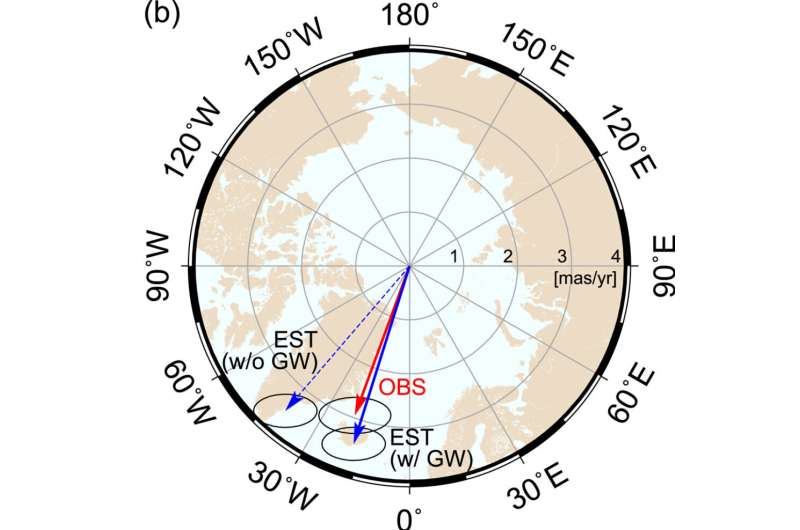- During the study period, the most water was redistributed in western North America and northwestern India, both at midlatitudes.
JUNE 15, 2023
We've pumped so much groundwater that we've nudged the Earth's spin, says new study

"Observing changes in Earth's rotational pole is useful for understanding continent-scale water storage variations," Seo said. "Polar motion data are available from as early as the late 19th century. So, we can potentially use those data to understand continental water storage variations during the last 100 years. Were there any hydrological regime changes resulting from the warming climate? Polar motion could hold the answer."
More information: Ki‐Weon Seo et al, Drift of Earth's Pole Confirms Groundwater Depletion as a Significant Contributor to Global Sea Level Rise 1993–2010, Geophysical Research Letters (2023). DOI: 10.1029/2023GL103509
Journal information: Geophysical Research Letters
Provided by American Geophysical Union
- One approach lies with the Earth's rotational pole, which is the point around which the planet rotates. It moves during a process called polar motion, which is when the position of the Earth's rotational pole varies relative to the crust.
- The distribution of water on the planet affects how mass is distributed. Like adding a tiny bit of weight to a spinning top, the Earth spins a little differently as water is moved around.
- Water's ability to change the Earth's rotation was discovered in 2016, and until now, the specific contribution of groundwater to these rotational changes was unexplored.
- In the new study, researchers modeled the observed changes in the drift of Earth's rotational pole and the movement of water—first, with only ice sheets and glaciers considered, and then adding in different scenarios of groundwater redistribution.
"This is a nice contribution and an important documentation for sure," said Surendra Adhikari, a research scientist at the Jet Propulsion Laboratory who was not involved in this study. Adhikari published the 2016 paper on water redistribution impacting rotational drift. "They've quantified the role of groundwater pumping on polar motion, and it's pretty significant."


No comments:
Post a Comment